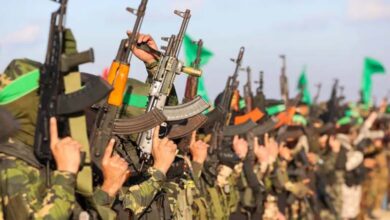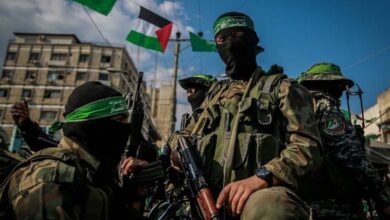Cabo Delgado: ISIS’s Gateway into Africa

In a forgotten corner of northern Mozambique, where natural wealth meets extreme poverty, a blazing conflict is unfolding—a reflection of deep-rooted marginalization and growing extremism.
-
Puntland’s Darawish Forces Eliminate ISIS’s Last Stronghold in Somalia – Details
-
Will al-Assad’s Regime Collapse Help ISIS Expand in Africa?
This is Cabo Delgado, a province rich in natural gas and rubies, which in just a few years has become an open war zone, where the group “ISIS – Central Africa Province” is waging battle against the state.
What began in 2017 as a marginal armed rebellion quickly evolved into a coordinated insurgency that took control of cities and ports, displacing over a million people. This strategic coastal strip has become a symbol of “development failure and a mirror of deeply rooted violence stemming from exclusion.”
-
Jama’at Nasr al-Islam wal Muslimin Attempts to Infiltrate Mauritania and Senegal: What Is It Planning?
-
Despite the losses How do ISIS groups continue to support their attacks worldwide?
A strategic location
The province’s strategic location has drawn both regional and international attention. It is home to wide cultural and ethnic diversity and hosts a large Muslim population, which forms an integral part of the local social fabric.
Cabo Delgado experienced an economic boom following the discovery of vast offshore natural gas reserves, drawing in billions of dollars in foreign investment, according to the Financial Times.
In addition to gas, the province also holds other natural resources like rubies and graphite.
Despite this wealth, the local population has seen little benefit. Enduring poverty and high unemployment have fueled feelings of marginalization and social unrest, transforming the region into a hotbed of violence following the emergence of an armed insurgency claimed by “ISIS – Central Africa Province.”
-
Fears that ISIS may exploit regional wars to re-emerge in Iraq… Details
-
Critical Points Mentioned in an American Report on the ISIS Organization
Located in Mozambique’s far north, Cabo Delgado borders Tanzania to the north and the Indian Ocean to the east. Its proximity to maritime routes and its rich coastline make it a strategic region.
With an estimated population of around 2.3 million, the province is ethnically diverse, including Makonde and Mwani groups. Roughly 54% of the population is Muslim, traditionally practicing a moderate form of Islam—though parts of the region have been influenced by radical ideologies over the past decade.
-
Report: ISIS without land but it adapts and its threats persist
-
The “ISIS Soldier”: America Concludes the “Dark Story”
The rise of violence and extremism
Cabo Delgado has witnessed a marked escalation in armed attacks by “ISIS – Central Africa Province,” evolving from limited strikes into full-scale takeovers of key cities such as Mocímboa da Praia in 2020.
According to The Guardian, the group has shown growing capability in executing large-scale, complex attacks, exploiting security loopholes and the partial withdrawal of regional forces—turning the province into a central hub for its activities.
-
Despite the losses How do ISIS groups continue to support their attacks worldwide?
-
Mauritania Warns: The “African Sahel” Region among the World’s Most Severe Crisis Hotspots
This has sparked increasing international concern over the deteriorating humanitarian and security situation.
Defense Post highlighted the group’s evolving tactical abilities, relying on guerrilla warfare and sophisticated operations, aided by the region’s rugged terrain and weak coordination among Mozambican security forces.
-
What are the Reasons Behind the Increase in ISIS Activity in Africa and What are the Scenarios for its Defeat?
-
After shifting its weight to Africa, could Somali Abdulkadir Mumin become the next leader of ISIS?
The roots of violence
Several interrelated factors are behind the surge in violence in Cabo Delgado:
- Economic marginalization: Local populations have seen little benefit from gas projects, widening the gap between citizens and the state.
- Weak governance and security: Government failure to secure rural areas left room for militant expansion.
- External support: Reports suggest logistical aid and training from networks operating in East Africa.
- Lack of social alternatives: Dwindling education and job opportunities have made youth easy targets for recruitment.
-
A Change in ISIS and al-Qaeda Strategies in the Africain Sahel
-
Alarming Security Deterioration in Nigeria: Civilians Trapped Between Boko Haram and ISIS
A humanitarian catastrophe
According to the Decide Electoral Platform, the conflict has displaced more than one million people internally, killed thousands of civilians, and created severe food and health crises, with makeshift camps lacking basic services.
In response, regional forces from the SADC and Rwanda have intervened to assist the Mozambican army in retaking vital towns and roads.
-
Breach of Fortified Cities and Strategic Attacks: Terrorism Unsettles the African Sahel
-
Using the Economy as a Tool of Infiltration… Al-Qaeda Expands in West Africa
While some areas have been reclaimed, the threat remains, especially with the insurgents’ use of mobile cells and their ability to blend into the local population.
Observers warn that failing to address the root causes of the conflict could turn Cabo Delgado into a new regional hotspot for extremism, on par with what has been seen in Mali or Somalia.












